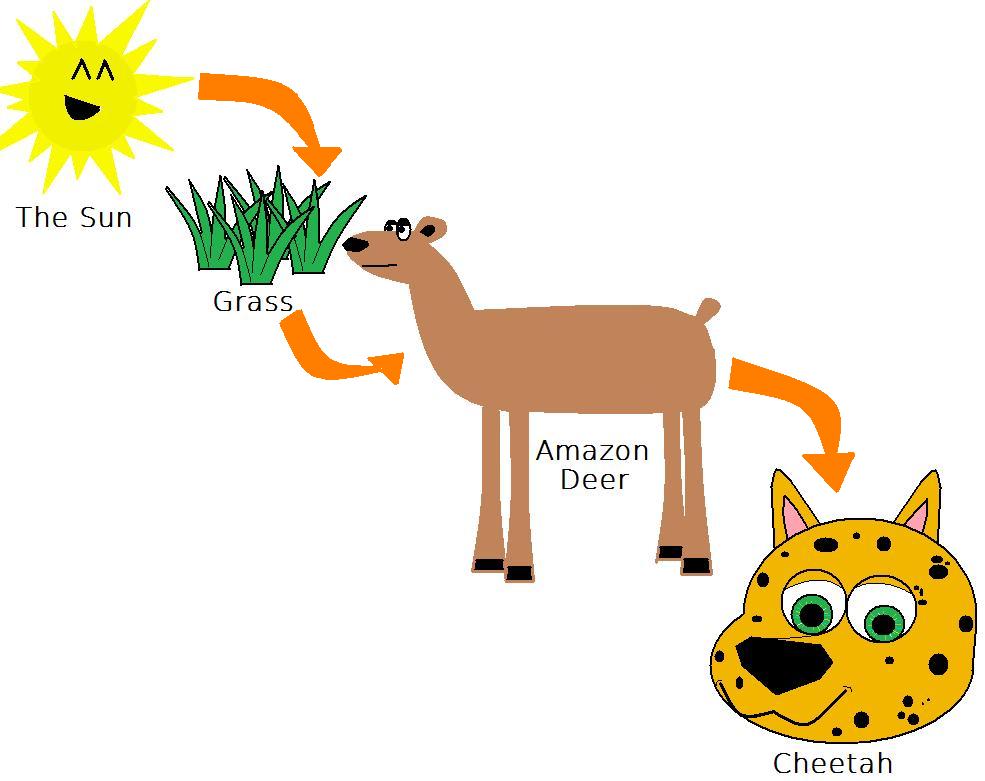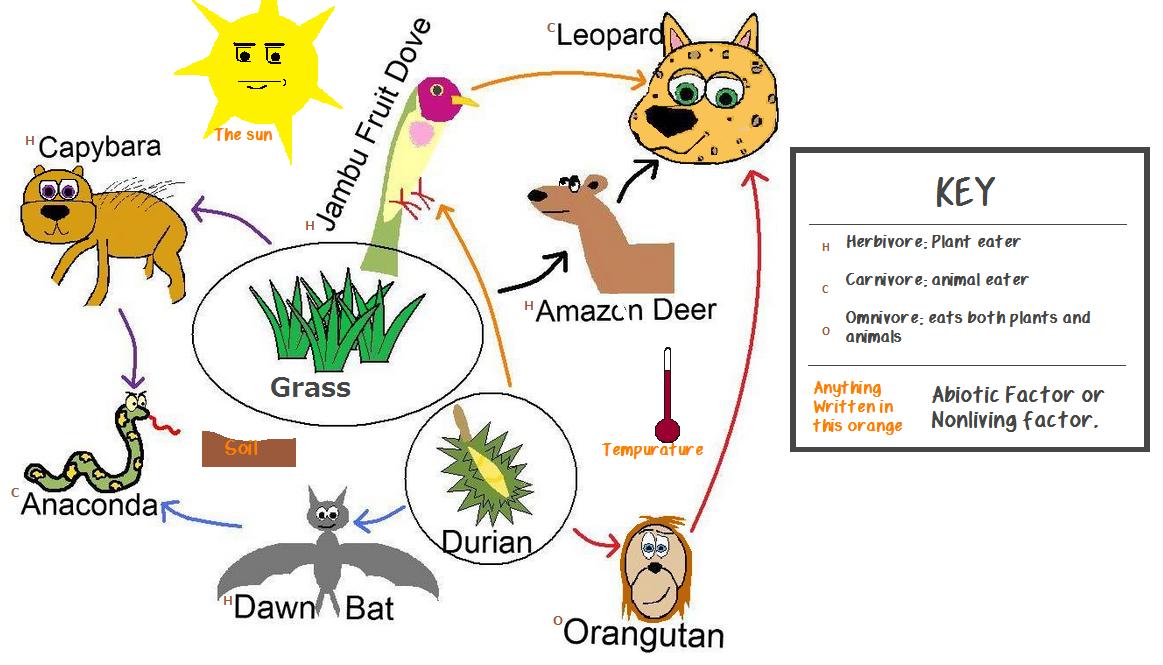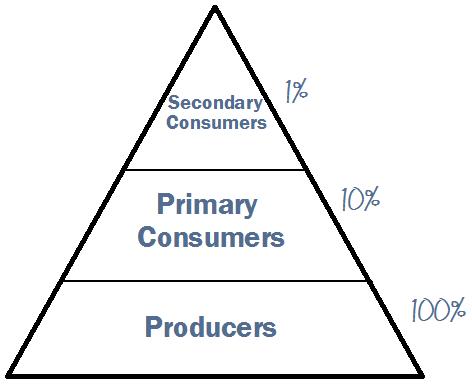
Energy flow, to be put simply, is how evergy moves throughout an ecosystem. Energy begins with the sun. The sun helps plants of all sorts make usable energy. Then those plants are eaten by animals, and then that animal is eaten by another animal (Then, maybe, that animal is broken down by a decomposer). As with the example above, the sun helps the grass make energy, then the deer eats the grass, and then the cheetah eats the deer. This is an example of a simple food chain. A food chain is a line of producers and consumers (and maybe decomposers) that shows the flow of energy from organism to organism. | You may ask yourself why it looks like the picture above seems to say that the grass ate the deer. This is a legitimate question, and the answer is surprisingly simple: the arrows represent the energy flow from organism to organism, and doesn't represent "This ate that." |
Predator and Prey
Predator and Prey relationships in nature are when one animal (the predator) kills another (the prey), by getting eaten.
One example of a predator/prey relationship in this food chain is when the cheetah eats the deer.
When you find these relationships in nature, the populations of each kind of animal looks like two opposite sine waves. This occurs when one population (cheetahs, let's say) eats lots of deer, there are more healthy cheetahs, they have babies, and then there are too many cheetahs and not enough deer.
Then the teeter-totter begins to tip the other direction because cheetahs are dying off from fierce competition for food, the best mates, and shelters. These factors are called Density-Dependent factors because they depend on the density of the population (there are also Density-Independent factors, which would be like tornadoes or wildfires or floods). This limits the growth of a population.
Invasive Species
But one thing to consider is this: what would happen if the deer were put into a place like this, but the area had no cheetahs? Well surely the deer would overpower and overpopulate the area, killing all it needed to survive. This is dangerous to all the other animals and plants because they are the cost for which the deer live.
Well what if there were an animal like that, unregulated and running rampant, that came into this area? It would put all the other organisms in danger for the same reason as would the deer.
This is why it tends to be smart to refrain from needlessly moving animals from their natural habitat without being under tangible regulation.

In the picture above, you'll find a Food Web. Food webs are simply a bunch of food chains put together.
Also, you may notice that there are two things with circles around them: these are producers. Producers are organisms that make their own food through photosynthesis.
Then the organisms that have arrows pointing from one of these producers are called primary consumers. Promary consumers are animals that directly eat producers.
Then the animals the eat these primary consumers are called secondary comsumers, because they are the second set of animals that consume something else to gain energy.

Energy Pyramid
What you see above is an Energy Pyramid. Energy pyramids express how much energy each kind of organism receives from the original amount of energy available. Producers represent 100% of all the energy available in this expression, then 90% of that energy is lost because the producer needs to use some, but mostly due to energy loss in the form of heat. Each level does the same thing; it loses 90% of its energy it had from the level before it. So if you wanted to calculate what percent of the total energy an organism receives, you could find what level it is on, you would just remember that each level decreases in powers of ten (or you could just say that you move the decimal to the right once for each level.
And this works for as many levels as you want. The 7th level would receive .00001% of the original energy at the bottom of the pyramid.